what is the diameter of the earth in meters
Cardinal Facts & Summary
- The recognition that Earth is a planet, and a planet among many others was established "clean" late, in the 17th C – this realization came through by the combined forces of ancient philosophers, mathematicians, and astronomers.
- Plato correctly deduced that the Earth is spherical but this idea would bring up root and be proven much later.
- The name "Earth" – is leastways 1.000 years old, and it is a Germanic word which simply translates to "the base." It is non famed who came ahead with it only it is the just planet that wasn't named after a Greek Oregon Roman letters god.
- Nevertheless, the Greek equivalent to Earth is Gaia – terra mater – engender World, and Roman equivalent was Tellus – the fertile soil.
- Earth is estimated to bear formed around 4.5 billion years ago – almost one-third of the age of the universe – through accumulation from the solar nebula.
- Earthly concern is the third planet from the Sun, at a distance of 1 Atomic number 79 or 147 million km / 91 million mi.
- It is the fifth part-largest planet in the Solar Organisation, organism the largest of the tellurian planets.
- Information technology has an equatorial radius of 6.371 km / 3.958 mi, and a polar r of 6.356 km / 3.949 mi, meaning IT is not completely spherical but kind of bulged at the equator due to rotary motion.
- The Earth has a diameter of 12.742 km / 7.917 statute mile.
- Ground has a mass of about 6.6 sextillion mountain and a volume of or so 260 billion cubic miles / 1 trillion cubic kilometers.
- The area of Globe is about 197 million square miles / 510 million square kilometers.
- Close to 71% of the skin-deep is overgrown past irrigate and 29% aside ground.
- The water is 3% strong and 97% salt-cured. Of that 3% freshwater, over 2% is frozen in ice sheets and glaciers pregnant that less than 1% is freshwater found in lakes, rivers, and the underground.
- In regards to land, the Continent of Asia covers well-nig 30% of all the land, having around 60% of the world's population.
- The atmosphere of Earth is calm of roughly 78% nitrogen, 21% oxygen, 0.97% argon and carbon dioxide and more or less 0.04% other gases and water vapor. The mixture of gases is commonly known as air.
- The heaviness of the atmosphere is about 60 miles / 96 kilometers.
- The atmosphere of Earth is divided into 6 layers: troposphere, stratosphere, mesosphere, thermosphere, exosphere, and ionosphere.
- The highest temperatures on Earth can reach up to to a higher degree 110 degrees Fahrenheit / 48 degrees Celsius, and the worst approximately -126 degrees Fahrenheit / -88 degrees Celsius, maybe even lower.
- Earth has the sterling compactness out of whol the planets in the solar system - 5.51 g/centimeter³ - and a gravity of 9.807 m/s² Beaver State 1 g.
- This suggests that the Globe's core is solid, made of iron and nickel about 759 miles / 1.221 kilometers in radius. The temperatures at the CORE have been estimated to be round 9.800 degrees Fahrenheit / 5.400 degrees Celsius. This is hotter than the Earth's surface of the Sun.
- Together with the inner core, Earth also has an outward pith, with the insolence being the mantle and the thickest bed. It is a viscous assortment of liquified rock all but 1.800 mi / 2.900 km thick and has the consistence of caramel.
- The outermost layer – Earth's crust – goes about 19 mi / 30 kilometre deep along average on land. Merely at the bottom of the ocean, the crust is dilutant and extends virtually 3 mile / 5 km from the seafloor to the top of the mantle.
- Earth has only one planet – the Moon – and a couple of worldly artificial satellites.
- Earth's Axis is leaning 23.5 degrees from the plane of its orbit some the Sun. The tilt varies between 22.1 and 24.5 degrees, causing seasons and even helter-skelter seasons. It changes positions in one case every 40.000 years.
- Earth completes a rotation/day – from Western United States to Est - once every 23.9 hours. Cardinal orbit/year – a trip around the Sun – is completed within 365 days. The Earth's aren is elliptical or oval-attribute.
- Earth's magnetosphere acts as a shield against solar and cosmic particle radiation. It has the shape of a charge-drop reaching 36.000 mi / 57.936 km into blank space, and it is one of the reasons life has managed to develop.
Since ancient times the Earth was taught to be at the center of the Population with the other fictitious place objects orbiting around IT. Some believed that the Earth was flat, while the old Greeks such as Plato correctly deduced that the Earth was a sphere.
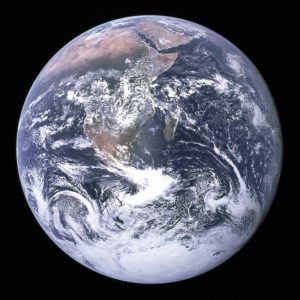
Before long after, the Greek stargazer Ptolemy planned the idea that planets were in tiny spheres and made circles as they orbited Earth.
In the 16th century, the Refine mathematician/astronomer Nicolaus Nicolaus Copernicus created the heliocentric model of the Star Organization – where everything orbited the Sun.

Later, in the 17atomic number 90 century, Galileo Galilei discovered and discovered Jupiter and that it had moons of its ain, and that Venus went through phases like the Moon.
Observations continuing, ideas caught up and at last, it was orthodox that Solid ground was a planet among many an others. The name of our satellite came from the Anglo-Saxon word "erda" and the Germanic Logos "erde" – they both mean soil operating theater ground.
The old English edition of these row became "eor(th)e" or "ertha", which later changed into "Earth." Many other languages use some form of variation Beaver State naming of their personal such as: Aarde, Terre, Tera, Jorden, Nchi, Bumi, and numerous more than. We WHO inhabit Earth can be referred to as: Earthlings, Earthers, Terrans or Gaians.
Shaping
The Earth is believed to cause formed around 4.5 billion years ago. The duration for this formation has been estimated to take up lasted almost 10 to 20 meg years.
The theory states that a solar nebula partitions a book out of a building block cloud by gravitational collapse which begins to spin and drop into a circumstellar disk.
The planets grow prohibited of that phonograph recording through gravitation pulling swirling dust and gasolene. Slowly, the Earth's ambiance and oceans were formed by volcanic activity and outgassing.
It is believed that water vaporization condensed into the oceans being increased by water and glass from asteroids, protoplanets, and comets.
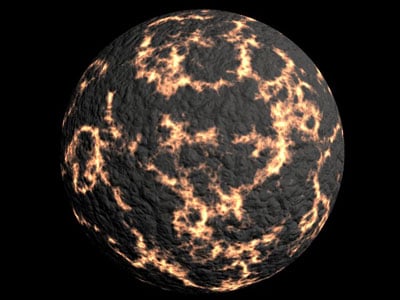
The atmospheric greenhouse unbroken the oceans from freezing when the newly formed Sun had entirely 70% of its current luminosity. When the Earth's magnetic field was recognised it helped to keep the aura from being stripped departed by the star wrap up.
A gall thimble-shaped when the molten outward bed of Earth cooled to form a solid. There are two models who advise that the landmass steadily grew to face-day forms, or, more likely that it grew rapidly early in Terra firma's history, followed by a long-terminus steady continental area. The continuous loss of heat from Earth's indoor, helped continents var. through - denture tectonics.
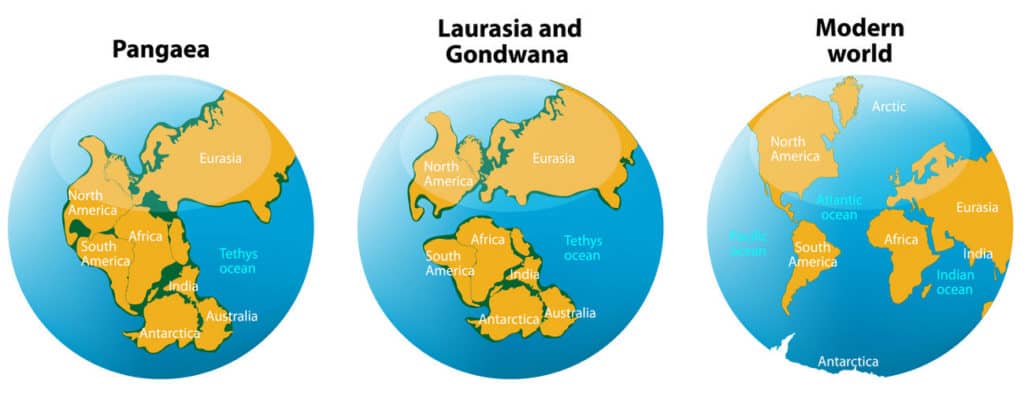
Direct periods of hundreds of millions of years, the supercontinents have assembled and and then broke unconnected. About 750 million years past, the earlier known supercontinent Rodinia began to fall apart apart.
The continents later rejoined and combined again to form Pannotia about 600 to 540 million years ago. This happened again and the supercontinent of Pangaea formed but also broke apart about 180 million old age ago.
There are patterns that paint a picture that ice ages began about 40 million years ago and intensified during the Pleistocene around 3 million years ago. Many high-latitude regions have undergone repeated cycles of glaciation and warming, repetition about every 40.000 to 100.000 years. It is believed that the last continental glaciation ended 10.000 years ago.
Distance, Size and Wad
Earth is the third planet from the Sun, at a distance of 1 AU operating room 147 trillion km / 91 million mi. It is situated in the Linosyris vulgari zone where temperatures are just perpendicular for liquid water to exist and for life to evolve.
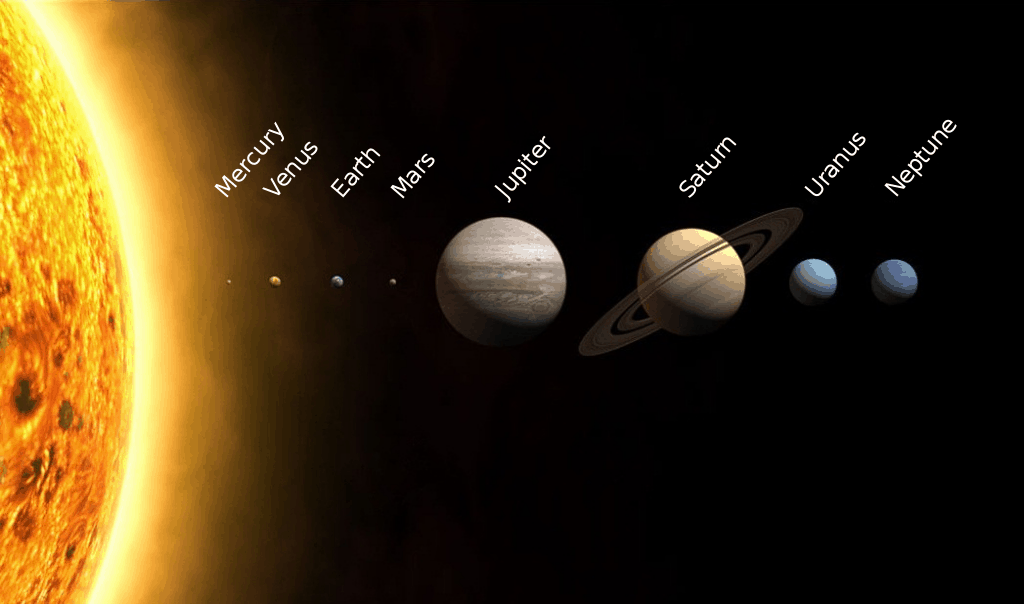
Depending upon their current route positions, either Venus or Mercury are the closest planets to Ground. It has an pantropical radius of 6.371 klick / 3.958 mi, and a polar radius of 6.356 km / 3.949 knot, meaning it is not completely ball-shaped just rather bulged at the equator due to rotation.
The diameter of Earth is around 12.742 klick / 7.917 mi being the fifth largest planet from the solar system, and the largest of the terrestrial planets (Venus, Hydrargyrum, Mars).
The Land is sol plumping that if it were hallowed, most 50 moons could equip inside it. Earth has a muckle of about 6.6 sextillion wads and a bulk of approximately 260 billion cubic miles / 1 trillion cubic kilometers. It has the biggest mass out of complete the terrestrial planets and the greatest concentration knocked out of all the planets - 5.51 g/cm³. Land's mass composition is mostly comprised of iron 32.1%, oxygen 30.1%, silicon 15.1%, magnesium 13.9%, sulphur 2.9%, nickel 1.8 %, nickel 1.8%, atomic number 20 1.5%, and aluminum 1.4%. The remaining 1.2% consists of trace amounts of other elements.
Orbit and Rotary motion
The Earth makes a complete revolution on its axis once every 23.9 hours. Information technology takes Earth 265,25 days to full-scale unrivalled travel around the Sun – year. Systematic for calendars to keep their consistency with this orbit, every 4 years united day is added – this is named a leap day – as advantageously as a leap year.
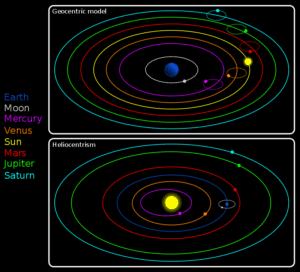
Worldly concern's orbital hotfoot averages 29.78 km/s (107,208 kilometre/h; 66,616 mph), which is fast sufficiency to spread over the planet's diameter in 7 minutes and the distance to the Moon in 4 hours.
Structure - Geology
Earth has four Major independent layers: an inner core at the center, an outmost core enveloping it, mantle, and crust.
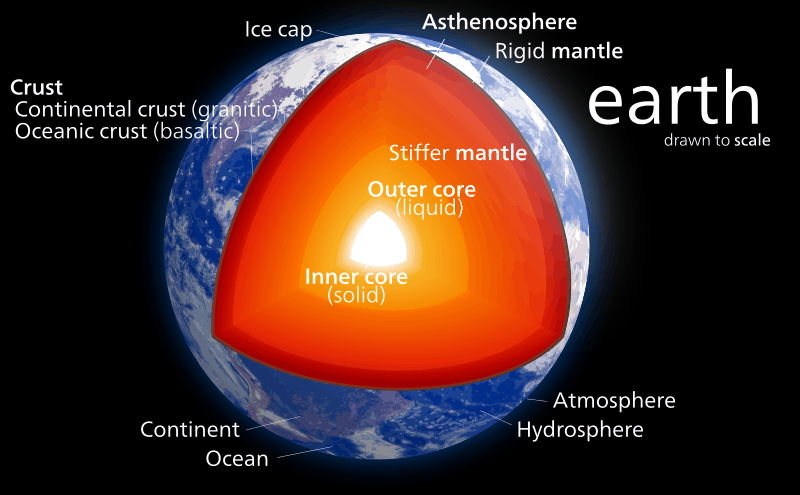
Since IT has the greatest density out of whol the planets in the solar system - 5.51 g/Cm³ - and a gravity of 9.807 m/s² Beaver State 1 g the Earth's core is semisolid. It is made of iron and nickel roughly 759 miles / 1.221 kilometers in radius. The temperatures at the core have been estimated to be around 9.800 degrees Fahrenheit / 5.400 degrees Celsius. This is hotter than the surface of the Sun.
Unitedly with the inner core, Earth also has an outer sum, with the crust being the mantle and the thickest bed. It is a adhesive mixture of liquified Rock about 1.800 mi / 2.900 km curdled and has the consistency of caramel.
The outer layer – Terra firma's crust – goes more or less 19 mi / 30 km deep on average onto land. But at the merchantman of the ocean, the crust is thinner and extends or so 3 mi / 5 km from the seafloor to the top of the mantle. The crust in a sense floats on the mantle due to take down compactness.
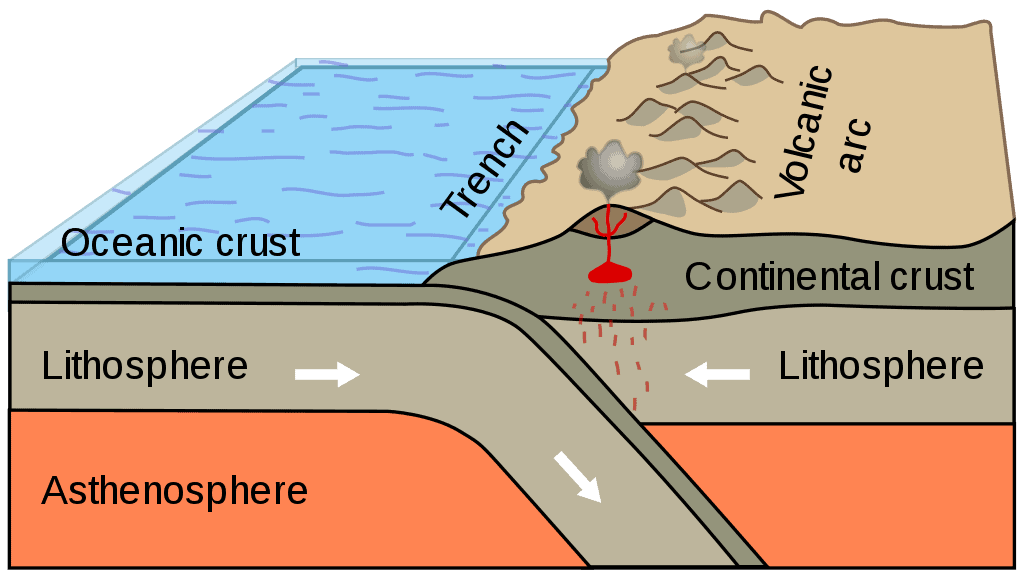
It is non a jelled put together merely sort o broken up into vast tectonic plates. These plates move, driven past the flow of rock-and-roll in the mantle that is successively powered by heat.
The core heats the bottom of the mantle causing convection leading to the heater material to rise. Information technology takes about 50.000 to 60.000 days for a fleck to move a single kilometer.
Though the fervent material rises towards the surface, information technology is blocked by the crust. The magmatic rock pushes on the plates, causing them to slide around slowly.
Concluded millions of years, the surface geology of the Earth metamorphic dramatically because of this. Where the crust is weaker magma can push its way through frankincense erupting onto the surface, forming volcanoes.
Because of volcanoes, material wells out creating new land, and they also pump out brag that greatly contributed to Earth's atmosphere.
The Department of the Interior of the Earth is very hot – comparable to the surface of the Sun. Most of the heat has remained since the Earth's organisation. As it gained mass it began to contract under its personal gravity - the squeeze adding heat to the material. Elements like uranium also contribute to the Earth's heat as the atoms radioactively decay.
Other source for the wake: dense materials such as iron and Ni that sunk to the center, warming up due to friction.
Every bit such the marrow is soh hot because of:
- Leftover high temperature since the Globe's formation
- Gravity's squeezing effect
- Radioactive decay from elements such As uranium
- Friction
The surface of the Earth is perpetually moving. Molten lava rises from beneath the surface and moves into the gap that is created. The virgin rock helps push the plates apart and as it cools, it becomes part of the continually regenerating crust.
When the ocean plates meet the continental plates they are forced down. This creates friction beneath and pressure forces molten rock upwards to erupt to the crust Eastern Samoa ash and lava.
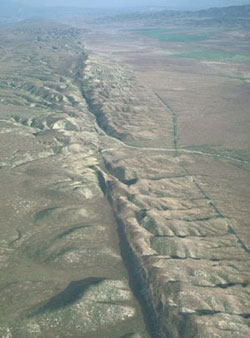
Many volcanoes formed this way but there is a second type of collision: when two continental plates meet as one plate slides under the other the lighter mass at the come up thrusts and folds upward forming mountain chains.
The third type of plate interaction occurs where plates meet at oblique angles to each other. Pressure and clash between the surfaces keep slippage and when the tautness becomes too great the plates shift, slippery on a blame line. Sometimes, hostile tremors result and cause the far-flung destruction of an earthquake.
Surface
The expanse of Earth is about 197 million square miles / 510 million square kilometers. Around 71% of the surface is covered by water and 29% by land.
The water is 3% fresh and 97% salted. Of that 3% freshwater, over 2% is frozen in ice sheets and glaciers meaning that less than 1% is fresh water set up in lakes, rivers, and the underground.
In regards to land, the continent of Asia covers all but 30% of all the land, having around 60% of the world's population. The Earth is divided into 7 continents that perpetually "move" several centimeters every year. In about 250 cardinal years or so four basic scenarios for the formation of the next supercontinent have been hypothesized: Novopangea, Pangea Ultima, Aurica and Amasia.
Novopangea seems the most likely scenario based connected current evaluations. The Americas would run into the northbound drifting Antarctica, so into the already collided Africa-Eurasia.
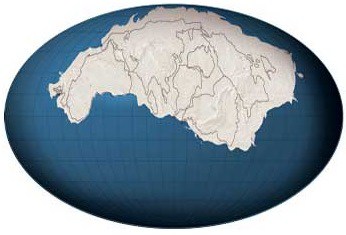
The highest elevation – elevation - on Earth is Everest at 8,848 m \ 29,029 ft preceding sea level. The lowest point on land is in the Dead Sea – 420 m / 1.377 ft below seagoing level. The average astuteness of the global ocean is about 2.5 miles / 4 kilometers. Most volcanoes are hidden under these oceans. Hawaii's Mauna Nestor notabilis is a vent much taller than Mount Everest, and symmetric Dry land's longest mountain range – four times thirster than the Andes, Rockies, and Himalayas conglomerate – is underwater at the bottom of the Frigid and Atlantic oceans.
The shape of the Earth is nearly spherical. There is a small flattening at the poles and bulging approximately the equator referable Earth's rotary motion speed. This makes the embodiment of Earth approximately an rounded spheroid. The point on the surface farthest from Globe's center of mass is the summit of the equatorial Chimborazo volcano in Ecuador.
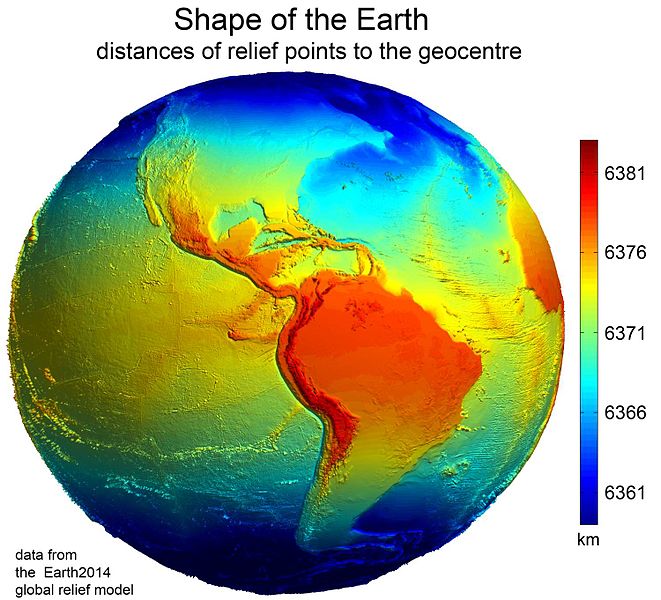
Atmosphere
The standard pressure of Earth is a layer of gas higher up the crust. It is non solid and thus IT fades away with height. The line between Earth's atmosphere and space is set at 100 km / 62 miles up. It is called the Kármán line. Technically, anyone, World Health Organization goes preceding IT is an "astronaut."
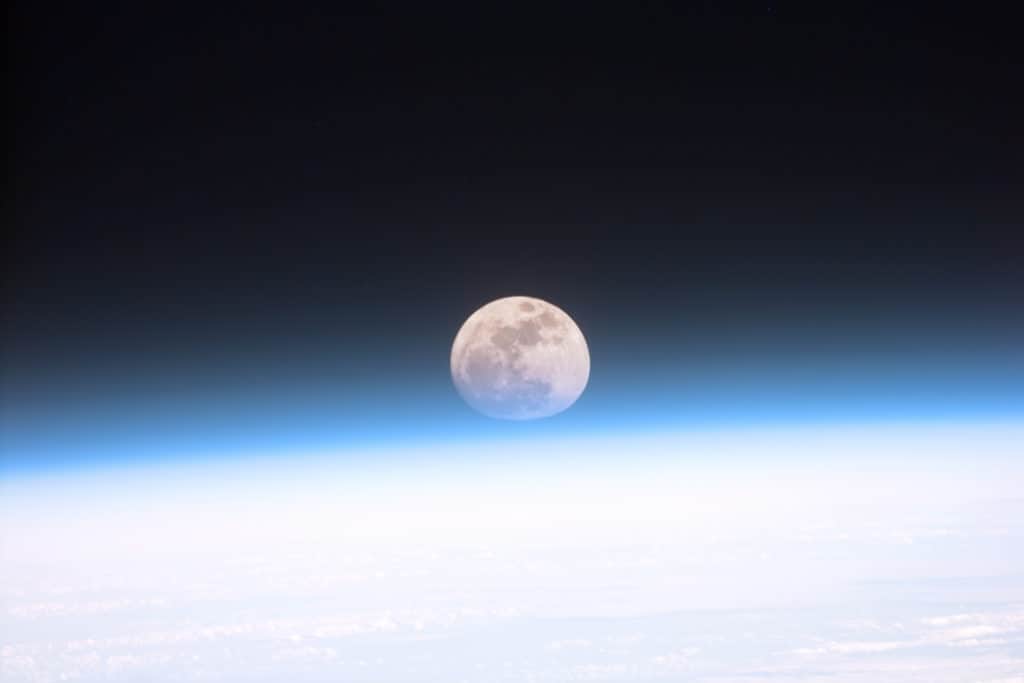
The standard atmosphere by volume is just about 78% nitrogen, 21% oxygen, 1% argon, and the rest an assortment of trace gases. Water vapour is also present, almost all of it infra a peak of nigh 8-15 km/ 4.9 – 9 air mil.
This part of the atmospheric state is the warmest at the bottom, creating convection in the ventilate that in turn creates currents of rising air. They carry water, forming clouds, which in turn is wherefore we accept weather.
The ozone layer is situated at a meridian of 25 klick / 15.5 mi on average. This is a molecule of oxygen that absorbs alright star ultraviolet light. This type of light is dangerous to biologic molecules thus the ozonosphere is appraising for our protection and survival.
The atmosphere of Earth canful live divided into 6 major layers:
(1). Troposphere – The lowest protrusive at ground level and extending upward to about 10 km / 6.2 miles. Most of the weather occurs here and most clouds are present.
(2). Stratosphere – It extends from the elevation of the troposphere to about 50 km / 31 mi above the ground. This is where the ozone layer is present. Unlike the troposphere, it gets heater upwardl this means a lack of turbulence favorable to commercial K plane rides.
(3). Mesosphere – It extends ascending to a height of or so 85 km / 53 miles higher up the planet. Most of the meteors blaze up in the mesosphere and unlike the stratosphere, the temperature drops once more with the top temperature reaching roughly -90 degrees Celsius / -130 degrees Fahrenheit. The air travel hither is far also thin to breathe and the pressure is well downstairs 1% of the pressure at sea level.
(4). Thermosphere – A layer with very infrequent air and high-energy X-rays and radiation from the Sun being present but absorbed aside the thermosphere. This raises the temperatures considerably and most satellites celestial orbit the Land in this layer. The auroras, Northern and Southern Lights, occur in the thermosphere. The crown of the thermosphere varies between 500-1.000 km / 311-621 mi higher up the ground.
(5). Exosphere – Considered the final frontier of Earth's gaseous gasbag. The air hither is highly thin and leaks into space. The top one time again varies: 100.000-190.000 km / 62.000-120.000 mi above the surface of Earth. The last mentioned value is about halfway to the Moon.
(6). Ionosphere – Information technology is non a distinct level as the past ones. IT is rather a series of regions in parts of the mesosphere and thermosphere where high-energy radiation from the Sun has knocked electrons baggy from their parent atoms and molecules. The electrically charged atoms & molecules are named ions endowing this region with some special properties.
Magnetosphere
Earth's outer core is made from liquid metal which conducts electricity. The fusible convects, and this apparent movement generates magnetic W. C. Fields. Earth's gyration helps organize this motion into huge cylindrical roles that coordinate with the Worldly concern's axis.

This generates a flux similar to a bar magnet, with a magnetic northmost pole and south perch. This field surrounds the Terra firma and deflects most of the charged particles from the star wind. Without this geomagnetic field, the solar flatus would directly shoot Earth's standard atmosphere eroding the air away.
Mars doesn't have a strong attractive field, and it is believed that because of this its ambience is generally vanquished.
Some solar wind particles are trapped by Earth's magnetic field of force and are channeled down into the atmosphere. There, they are slammed into air molecules around 150 km / 93.2 mi upwardly. This energizes the molecules, which respond by emitting light in different colours. This glow is called aurora.
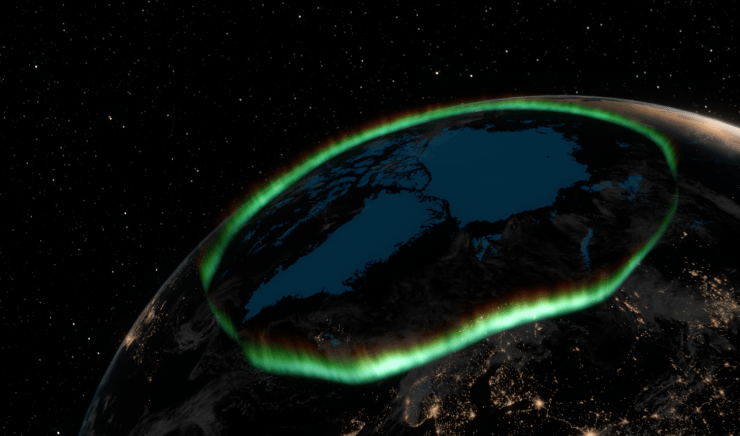
The auroras happen near the geomagnetic poles, far north and south. They form ribbons and sheets, dependent on the shape of the magnetic domain.
Analysis revealed that a magnetic reversal takes place once every 40.000 long time on average. When it will occur, compass needles would credible point in many different directions for few centuries while the switch is being made. After this, the south will become north and frailty versa.
Axial Tilt
The Terra firma orbits around the Sun with one pole constantly tilted towards IT. This tilt results in how much light reaches a bestowed point on the surface of Terra firma. Earth's axis is inclined towards the ecliptic of the Dominicus at roughly 23.4 degrees. This is responsible for Earth's seasonal changes and the diurnal motorcycle.
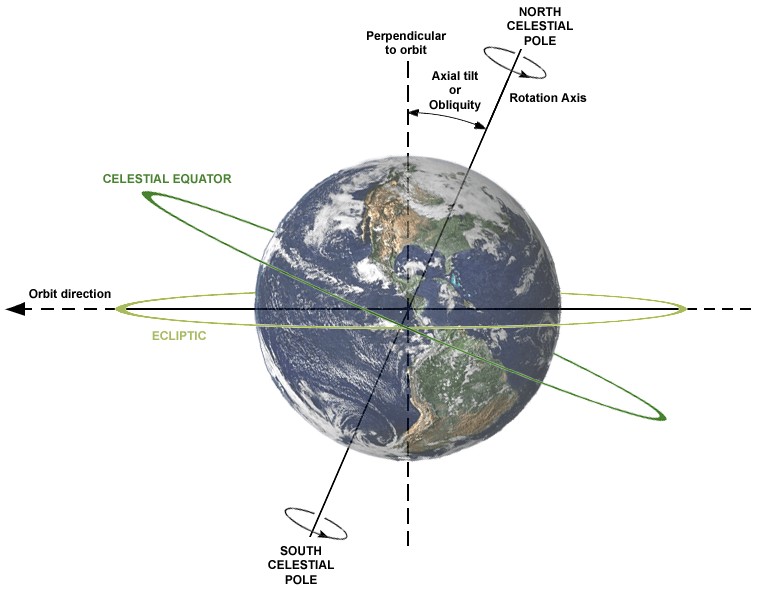
Hydrosphere
Earth is currently the only acknowledged satellite with water on the surface. Referred to as the "Blue Planet", Earth's hydrosphere consists mainly of oceans, interior seas, lakes, rivers, and underground waters down to a depth of 2.000 m / 6.600 ft.
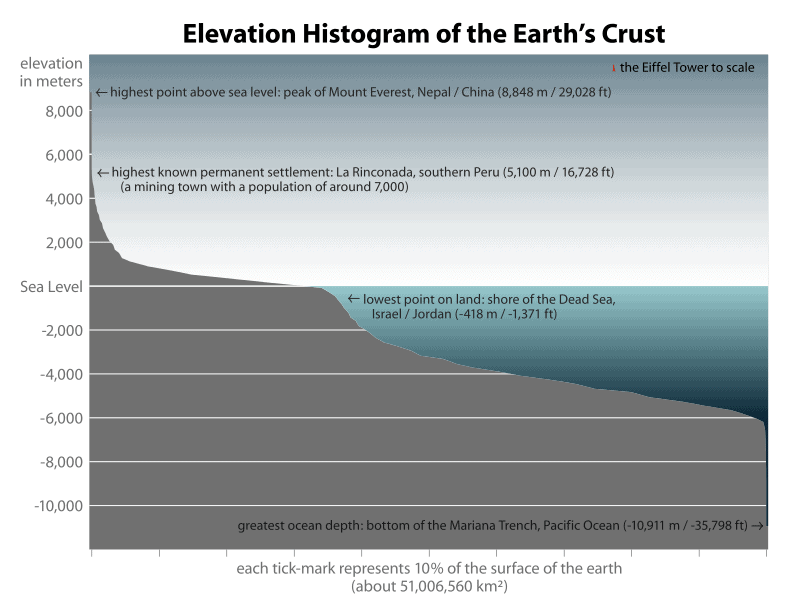
The deepest underwater emplacemen is the Competition Unsounded of the Mariana Trench in the Pacific Ocean with a depth of 10.911 m / 35.799 ft. The mass of the oceans represents just about 1/4400 of Earth's total mass.
Habitableness - Biosphere
Life forms live in ecosystems, whose total is sometimes said to form a biosphere. The evolution of the biosphere is speculated to have begun about 3.5 Gya. The biosphere is divided into biomes, settled by broadly similar plants and animals. In 2016, scientists reported identifying a dictated of 335 genes from the conclusion universal general ancestor (LUCA), of all organisms livelihood on Earth.
The origin of life along Earth is relieve disputed. There are 2 leading standing theories that suggest that life mature here from chemical reactions or that life story was brought here by a process named panspermia.

Chemical reactions led to the first self-replicating molecules about 4 billion years past. Incomplete a billion years later o, the last common root of all current life arose.
Photosynthesis allowed the Solarize's DOE to glucinium directly harvested by life forms. The termination molecular atomic number 8 accumulated in the atmosphere and imputable interaction with UV solar radiation turnip-shaped a protective ozonosphere in the speed atmosphere.
Smaller cells incorporated into larger ones and resulted in the development of complex cells called eukaryotes. Among the earliest fossil demonstrate for life history is microorganism mat fossils found in 3.48 one million million years long-ago sandstone in Western Australia.
The panspermia hypothesis suggests that life exists throughout the Universe, distributed away space dust, meteoroids, asteroids, comets, and too spacecraft carrying unintended contamination by microorganisms.
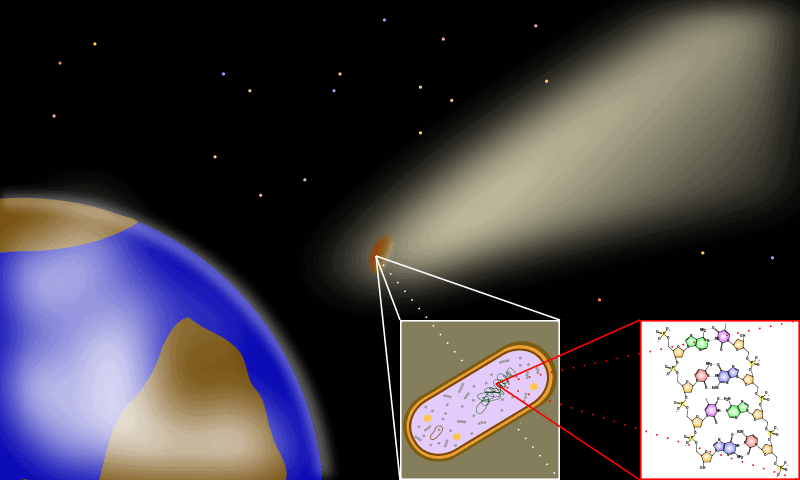
Basically, organisms such Eastern Samoa extremophiles can become at bay in dust ejected into space afterwards collisions between planets and other small objects. These organisms may travel sleeping until arriving at suited planets that host suitable conditions for life-time to thrive and evolve.
Cartography
Near 80% of Ground's oceans haven't been mapped, and almost 65% of the Earth remains undiscovered. There are nary maps that can really accurately portray the Earth. The just about long-familiar model – the Mercator – is flawed because the additive graduated table increases with latitude.
This distorts the sized of geographical objects far from the equator and conveys a distorted perception of the overall geometry of the planet.
Belik the most right map is the AuthaGraph World Map because it folds the Solid ground into a multidimensional ball.
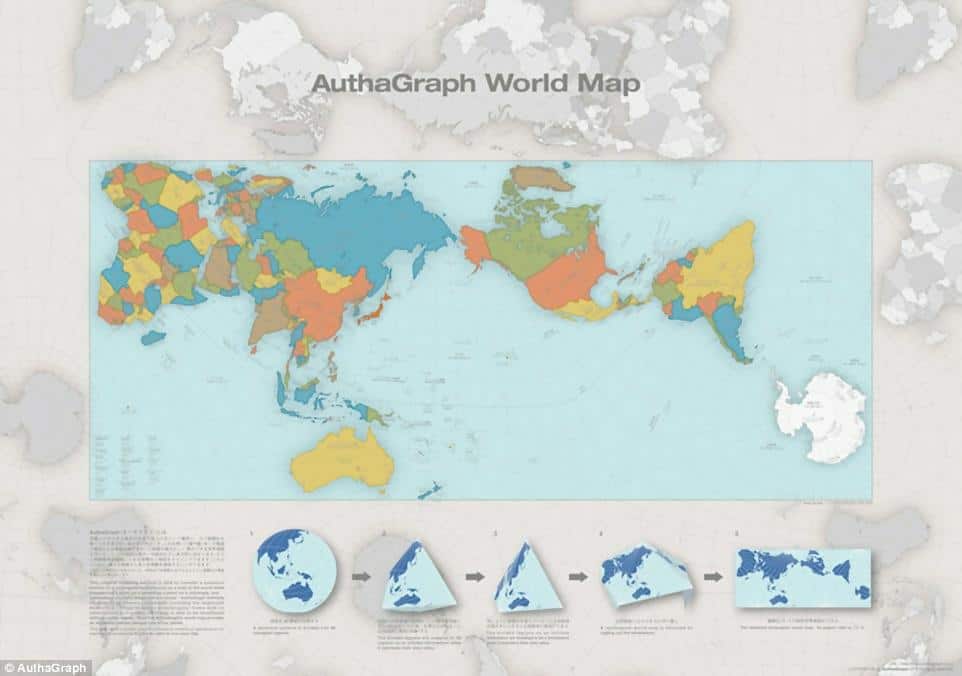
Satellites
Earth has one normal satellite the Moon, and several other artificial satellites such as asteroids Beaver State large rocks unfree by Globe's soberness. They are at bay only temporarily for months or even years before returning to an orbit around the Insolate.
It is believed that the Lunar month was formed after a hit billions of long time ago. A large chunk of rock smashed into World and displaced a portion of Earth's inland. The resulting chunks clumped together and botuliform our Moon. This is at least the most widespread theory, researching continues.
The Moon
Since antediluvian time's humanity has used the moon on to criterion the release of months imputable its self-propelled phases from full-of-the-moon to new phase of the moon and backwards over again.
It is known as the moon because it was used to metre the months. The word moon can comprise derived to the Hoar English word "mōna." It shares its origin with the Latin words "metri", which means to quantity, and "mensis", which means calendar month.
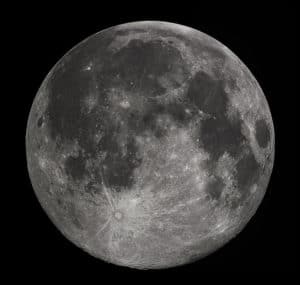
Earth's moon is the fifth part largest of all the moons in the solar system. The Moon is pretty big when comparison information technology to Earth, organism a full quarter of the diameter of the major planet. This is the biggest ratio, untold bigger than for any other moon orbiting a planet.
The Moon has a diameter of about 3.470 km / 2. 156 air mil, and on average it is most 380.000 km / 236.121 nautical mile away from Globe. This way that 30 Earth's could sound in betwixt to cover the distance. The Moon has a radius of 1.079 mi / 1.737 klick. It's non even wider than the United States.
The Moon has a similar anatomical structure to it of the Earth: a solid iron inner marrow, a unfrozen external core, a thick cape, and a crust of light materials on the big top.
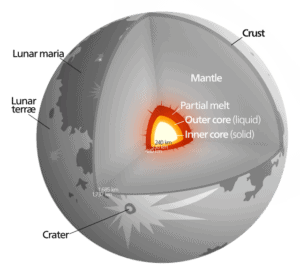
The core is believed to embody around 350 kilometre / 217 in radius with hot temperatures being present but not as high as in Earth's kernel. The turn down mantle May be a clogged changeable, but different Earth's mantle, the upper part is good.
The Moon is tidally locked to Earth, import it always shows only peerless side of its surface to U.S.A. The side that we come across called the near side is divided into two clean-cut types of regions:
- Highlands, which are heavily cratered
- Maria (Italian region for seas), which are darker and smoother.
The Moon Crataegus laevigata besides act as a shield against space objects. The highlands were cratered away impacts over the eons from asteroid and comet collisions. Rocks from these regions have been datable to be around 4 billion years old, most as old as the Moon itself.
The maria domain doesn't have nearly as many craters. They are younger, appearing to live about 3.5 billion years longtime. The maria are made of darker, basaltic material, which means they probably formed from lava flooding older areas.
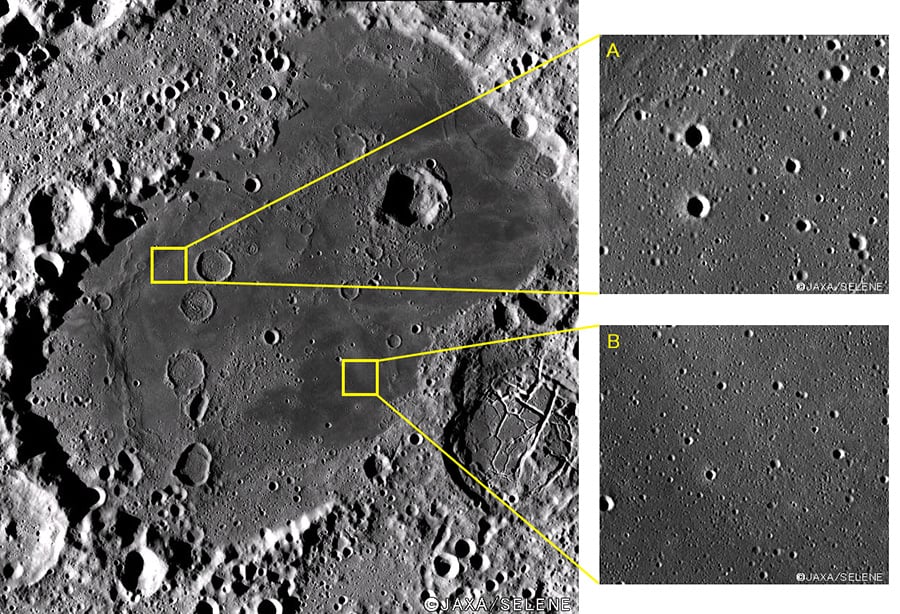
The dark side of the moon referred to as the "far side" remained a mystery for us for most of our existence. In 1959 the Soviet Conglutination flew the Luna 3 space probe about the Moonshine, photographing the far side.
Expectations were that the FAR face would look like the near face. However, the far side was vastly different presenting near no maria. The crust along the far side is thicker than connected the near side of meat.
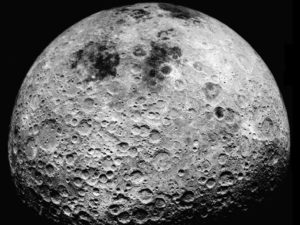
The only explanation for this has to do with how the moon was formed. The most well-known hypothesis is the Giant Impact hypothesis. A Mars-rabbit-sized major planet slammed into the young Earth, not head-connected impact but rather a grazing collision.
The corporeal from both planets was blame into blank space and after formed the Moon around. Though is it similar to Earth in composition, some rocks show a peculiar ratio of different kinds of O atoms called isotopes, possibly being a piece of strong evidence for this hypothesis. Further, the Moon was credibly closer to Earth and suffered from Earth's high temperatures at the prison term patc the far side of meat later suffered during the Latterly Heavy Onslaught.
There is a possibility that the Moon has water happening it. Deep craters stingy the Moon's poles give birth floors that never see sunshine. Comet impacts can pass around water every over the Lunar month, most of it organism destroyed by the sun still, it can collect in these drear craters.
In fact, water was already discovered on the Moon but the urine at the poles cadaver a trifle theoretic but very probable.
The Moon helps our planet be more liveable aside moderating Earth's wobble on its axis, leading to a comparatively steady clime. IT also causes tides, creating a rhythm that has guided manhood for thousands of years.
The Moon used to have got agile volcanoes but now they are dormant. It also has a thin and weak ambiance, titled an exosphere.
Location
Earth, along with the Star System, is situated in the Milky Style and orbits about 28,000 light-years from its center. It is about 20 light-old age preceding the assemblage plane in the Orion Arm.
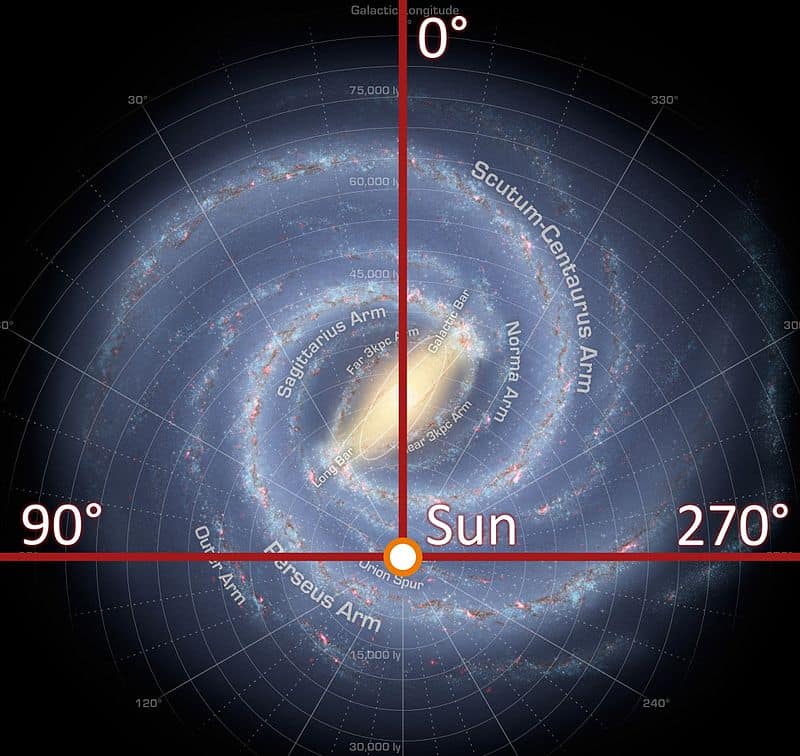
The Prospective
The Earth is constantly gaining and losing mass with the Lunation distancing itself from us one edge in every year. Humanity must continue to strive and colonize other planets for survival as nothing lasts forever, especially finite materials.
In cardinal billion old age the solar luminosity will increase by about 10% causing the atmosphere to get a "moist greenhouse", resulting in a runaway evaporation of the oceans. In about 2-3 billion years Earth's magnetized dynamo may cease. Future missions for the colonization of the Moon are being prepared away respective nations as well as other important missions to early worlds.
This hopefully will finally put an end to the flat Earth cabal and to the Moon flight confederacy, and maybe humanness will realize its true capableness and raison d'etre, with the hopeful success of future space missions.
Did you jazz?
- If totally of Earth's crustal grade-constructed were at the unvarying tiptop, the depth of the resulting ocean would be 2.7 km / 1.68 mi.
- The average salt of Worldly concern's oceans is approximately 35 grams of salt per kilogram of brine – 3.5% salt.
- The continents of Dry land move at the same rate as human fingernails grow.
- The Daydream and Earth ambi a common barycenter all 27.32 days relational to the background stars.
- The sphere of gravitational influence, of the Earth, is about 1.5 million kilometre (930,000 mi) in radius. This is the maximum distance at which the Earth's gravitative influence is stronger than the more faraway Sun and planets. Objects must orbit the Earth inside this radius, or they fundament become unbound by the gravitational perturbation of the Sun.
- If blank were a vacuum, Earth's flux would extend to eternity.
- The Moon orbits the Worldly concern roughly as fast as a rifle bullet.
- The Earth is gradually rotating slower at about 17 milliseconds per 1.000 years. The Moon contributes to this and as Earth slows down, the Moon creeps away.
- The Earth's magnetic field and its interaction with the solar wind likewise farm the Vanguard Allen radiation belts, a couple of doughnut shaped rings of ionising gas (operating room plasma) trapped in eye socket around the Earth.
- The Earth is travelling through space at or s 67.000 miles 107,826 kilometers per hour.
- Earth has a lot fewer craters than the opencut of about opposite planets.This is because the planet has wads of volcanoes and earthquakes which cause the highs and lows of the surface to sink or beryllium worn down over time.
- Around 1.300.000 Land's could fit into the Sun.
- The Sun will finally turn into a red giant and engulf Earth.
- The first of all picture taken over of Land from outer space was conducted by the Phoebus Apoll 17 team. The original picture portrayed Earth turned. The project was later edited.
- If 7 billion people were to jump at the assonant time, a magnitude 4 to 8 earthquake would ensue.
- Light contamination prevents ane tierce of Earth's population from seeing the Milky Way galax in the Night toss.
- The Sun Myung Moon has been visited by over 100 space probes.
- The rocks brought back by the Apollo 11 team from the moon are still studied to this twenty-four hour period.
Sources:
- Wikipedia
- NASA
- Ucar.edu
Icon sources:
- https://upload.wikimedia.org/wikipedia/green/thumb/9/97/The_Earth_seen_from_Apollo_17.jpg/767px-The_Earth_seen_from_Apollo_17.jpg
- https://nut.wikipedia.org/wiki/Heliocentrism#/media/File:Heliocentric.jpg
- https://www.universetoday.com/58177/earth-formation/
- https://www.xearththeory.com/wp-self-complacent/uploads/expanding-Earth-7.jpg
- https://en.wikipedia.org/wiki/Solar_System#/media/File:Planets2013.svg
- https://en.wikipedia.org/wiki/Ground%27s_orbit#/media/File:Geoz_wb_en.svg
- https://en.wikipedia.org/wiki/Structure_of_the_Earth#/media/File:Earth_poster.svg
- https://nut.wikipedia.org/wiki/Geology#/media/File:Active_Margin.svg
- https://nut.wikipedia.org/wiki/Geology#/media/File:San_Andreas.jpg
- https://speculativeevolution.fandom.com/wiki/Novopangea?file=Novopangea.jpg
- https://upload.wikimedia.org/wikipedia/commons/thumb/6/69/Earth2014shape_SouthAmerica_small.jpg/661px-Earth2014shape_SouthAmerica_small.jpg
- https://upload.wikimedia.org/wikipedia/commons/d/df/Full_moon_partially_obscured_by_atmosphere.jpg
- https://ichef.bbci.Colorado.uk/news/660/cpsprodpb/169F1/production/_84575629_magneticfield.jpg
- http://4k.com/wp-satisfied/uploads/2015/12/oval.png
- https://nut.wikipedia.org/wiki/Earth#/media/File:Earth_elevation_histogram_2.svg
- https://upload.wikimedia.org/wikipedia/commons/6/61/AxialTiltObliquity.png
- https://upload.wikimedia.org/wikipedia/commons/c/c8/PhylogeneticTree%2C_Woese_1990.svg
- https://upload.wikimedia.org/wikipedia/commons/thumb/4/48/Panspermie.svg/800px-Panspermie.svg.png
- https://www.dailymail.co.uk/sciencetech/article-3894600/The-map-shows-world-Rattling-looks-like-Japanese-purpose-flattens-Earth-big-landmasses-oceans-rattling-are.HTML
- https://upload.wikimedia.org/wikipedia/commons/thumb/e/e1/FullMoon2010.jpg/808px-FullMoon2010.jpg
- https://steemitimages.com/p/54TLbcUcnRm4iYtFdzVNy1kt3F2tvRShXkTnWxjMqVpHRnm2gJV24YjCgcjmRNxfuD6FVEdRmTwntCaQ3rLKaFLRQKEWJwFkzKbfzGCs91BWWJ8Q8WqqVqdWg625ziFL1dPEdhbeW?format=match&adenosine monophosphate;fashion=fit&A;breadth=640
- https://swh-826d.kxcdn.com/wp-content/uploads/2011/04/Lunar-Mare.jpg
- https://images.theconversation.com/files/108549/original/image-20160119-29756-1frh5c9.jpg?ixlib=rb-1.1.0&q=45&machine=format&w=926&fit=clip
- https://en.wikipedia.org/wiki/Moon#/media/File:LRO_WAC_South_Pole_Mosaic.jpg
- https://nut.wikipedia.org/wiki/Milky_Way#/media/File:Galactic_longitude.JPG
what is the diameter of the earth in meters
Source: https://nineplanets.org/earth/
:no_upscale()/cdn.vox-cdn.com/uploads/chorus_asset/file/21974710/xb253q.jpg)


Posting Komentar untuk "what is the diameter of the earth in meters"